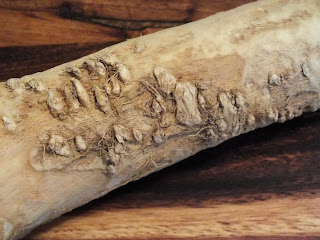I had a nice lunch at a Thai restaurant in the Buena Park neighborhood, hopped the L to the Wicker Park/Bucktown area, and grabbed a latte in the Loop before hopping the L back Rogers Park. Chicago is definitely a city of neighborhoods, each with its own flavor and claim to fame. I have to confess, despite the fact I have lived in Chicago for nearly 5 years, I still am unclear as to the boundaries and locations of several neighborhoods. Sometimes you can find a banner, flag, or sidewalk marker to let you know where you are, but in the case of Bucktown and Wicker Park, they have the same sidewalk markers, so unless a place advertises that it's in one neighborhood or the other, I am never quite sure which neighborhood I am in.
Over the years, people have tried to explain the boundaries to me. I smile and nod and say "Ohhh, okay," but most of the time the information is meaningless to me. Part of it is a product of being born and raised in the Northeast. Roads out East ramble along around mountains and over rivers. Out East, directions are usually given by landmark, not by compass point. This system makes more sense to me, but it is not without its disadvantages. For one thing, a house is almost always referred to by it's PREVIOUS occupants, unless of course those occupants weren't "from around here." The house across the street from my folks was known as 'The Paul House' from the time they sold it in 1970 until it was demolished nearly 40 years later.
That sort of sense of tradition is not unknown here in Chicago. Bucktown got its moniker from the herds of goats kept there in the 19th century. Wicker Park is named for Charles and Joel Wicker, the brothers who laid out one of the original subdivisions in the neighborhood. Though the area has a decidedly urban feel, I felt connected to my East coast roots today. Milwaukee Avenue runs at an angle to to the rest of Chicago's grid system, so there are streets that meander and aren't parallel or perpendicular to each other. Just as I would out East, I spent some time today exploring some of the little side streets.
The area is a mix of 19th century and contemporary architecture and I spent quite a bit of time photographing a beautiful, gable front, brick building with wonderfully weathered Italianate details and a cast iron fence that had seen better days. Many of the commercial buildings have cast iron facades, not unlike the commercial buildings in Upstate NY, where I lived for about a dozen years. The neighborhood is also home to Santullo's, one of the few places I've found in Chicago where I can get real, New York-Style pizza. I even happened upon a connection to Cherry Valley, the little town of 1,200 people were I lived in NY. I was exploring a book store when a 'Just Arrived' sign caught my eye. The book, East Hill Farm, by Gordon Ball, is about a farm in Cherry Valley that Allen Ginsberg purchased and used as a writers' retreat back in the late 1960s.

Thumbing through the book brought back pleasant memories. Though I didn't live in Cherry Valley in the 1960s, I did help with a beat poetry reunion and festival hosted there some 30 years later. I had seen most of the photographs in the book and part of the poetry weekend included tours of what remained of the East Hill Farm. I had ventured out today because my head has been swimming with all sorts of thoughts about this blog, my artwork, and what I want from life. I had been in this very bookstore not 24 hours earlier, listening to presentations by two very different artists, yet each gave me perspective on my own creative journey. As I put the book back, content, but not the least bit homesick, I realized that I am where I need to be.
It was nice to get outside without the weight of a heavy, winter coat, and it was nice to look inside and see the past without the weight of second guessing.











































